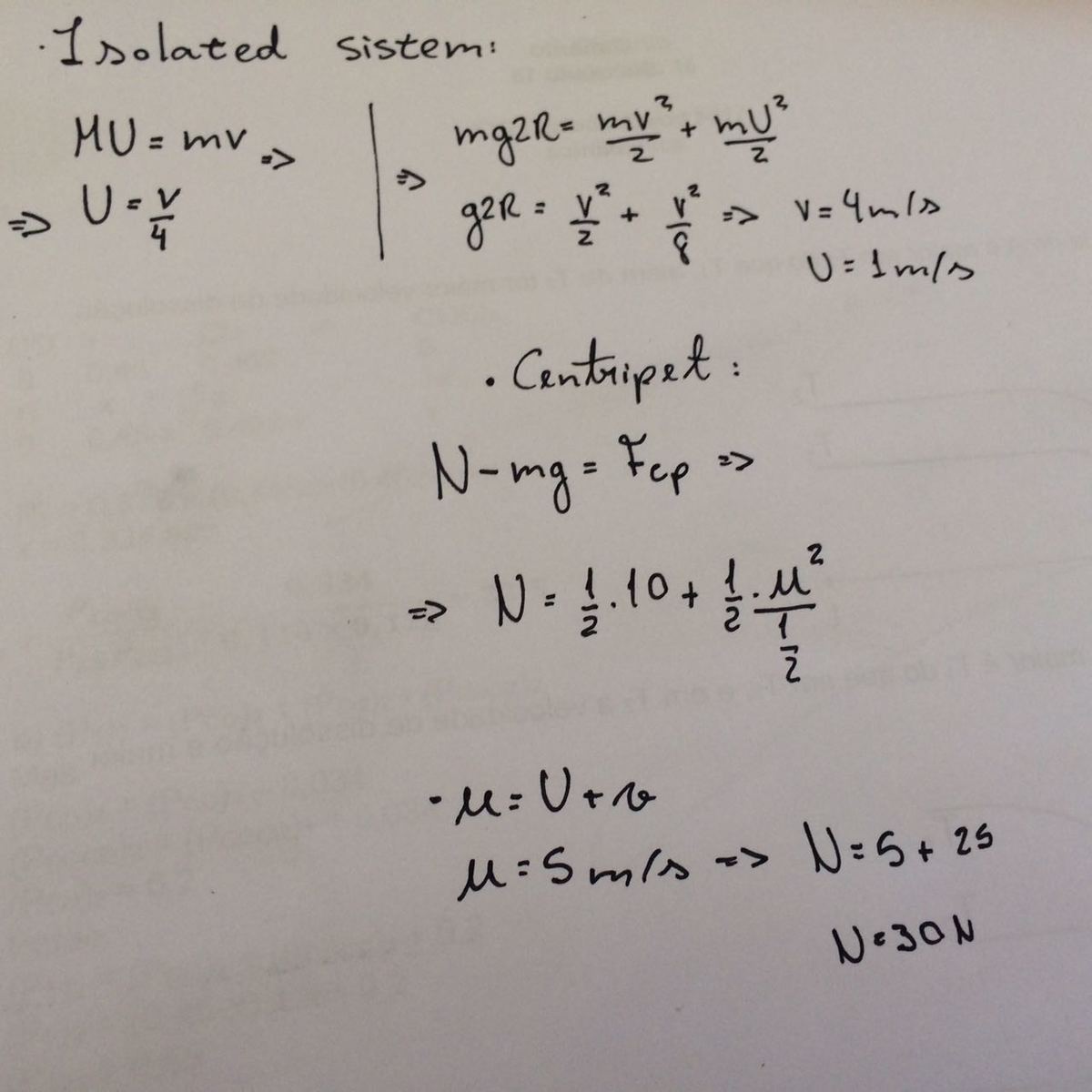A Lazlo Holics problem
As shown in the diagram, an empty hemisphere with radius is fixed to the top of a cart rolling smoothly on a horizontal ground, such that its cross-section is parallel to the ground.
The cart with mass is initially at rest, and a point-like ball with mass is dropped into the hemisphere tangentially from a height of above one of its edges. The ball then slides with no friction through the hemisphere.
With what force (in Newtons) will the ball press the hemisphere on its lowest point? Take .
The answer is 30.
This section requires Javascript.
You are seeing this because something didn't load right. We suggest you, (a) try
refreshing the page, (b) enabling javascript if it is disabled on your browser and,
finally, (c)
loading the
non-javascript version of this page
. We're sorry about the hassle.

Relevant wiki: Uniform circular motion - Medium
In the absence of friction, no force acts in the horizontal direction on the cart and ball system. Therefore, their momentum must be conserved along the horizontal direction.
Let the speed of the cart be v c and the speed of the ball be v b at the instant the ball reaches the bottommost point of the hemisphere. Thus using the momentum conservation we may write.
m cart v c = m ball v b v b = 4 v c .
Again due to no friction on the surface of the hemisphere, we can conserve the mechanical energy, m ball g 2 R = 2 1 m cart v c 2 + 2 1 m ball v b 2 Substituting the value of v b , m cart , and m ball , we get, v c = 1 , v b = 4 m/s .
Now, in the frame of the cart, the path of the ball is circular and its speed equals v b c = 4 + 1 = 5 m/s .
Applying the equation of centripetal force at the bottommost point of the hemisphere, N − m ball g = m ball R v b c 2 Substituting the values, we get, N = 3 0 N .